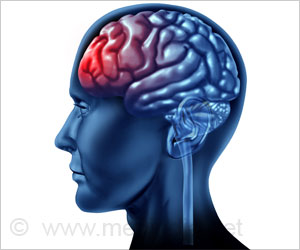It reflects the steady informational gains made in the intracerebral hemorrhage field since the last guideline on ICH management was published in May 2015.
“Advances have been made in an array of fields related to ICH, including the organization of regional health care systems, reversal of the negative effects of blood thinners, minimally invasive surgical procedures, and the underlying disease in small blood vessels,” says Steven M. Greenberg, M.D., Ph.D., FAHA, chair of the guideline writing group, a professor of neurology at Harvard Medical School and vice-chair of neurology at Massachusetts General Hospital, both in Boston.
About intracerebral hemorrhage (ICH)
ICH accounts for about 10% of the nearly 800,000 strokes that occur annually in the U.S. Typical causes of primary ICH (i.e., ICH not due to another condition such as head trauma) include uncontrolled high blood pressure and age-related degeneration of the brain’s blood vessels.
ICH is also one of the deadliest types of strokes, with a 30% to 40% death rate. ICH affects Black and Hispanic people at a rate 1.6 times higher than white people according to U.S. studies. Worldwide, stroke (of any kind) is the second-leading cause of death and a leading cause of long-term disability.
The likelihood of an ICH increases sharply with age, so as the population gets older, these types of strokes are expected to remain a significant health concern.
Therefore, new treatments for ICH and improved use of evidence-based approaches are needed for ICH prevention, care, and recovery.
Updates to Standard Care Practices
The new guideline suggests that many techniques widely considered “standard care” are not necessary. For example, research confirms that wearing compression socks or stockings of any length to prevent deep vein blood clots, known as deep vein thrombosis, after a bleeding stroke is not effective.
Instead, a method known as intermittent pneumatic compression, which involves wrapping the lower legs and feet in inflatable boots, may be helpful if started on the same day as an ICH diagnosis. Further information is needed, though, on whether using compression stockings in combination with medication may prevent blood clots from developing.
Even more, research is needed on how new blood clot prevention medications may help, especially within the first 24 to 48 hours of the first symptoms.
Anti-seizure medication did not contribute to improvements in functionality or long-term seizure control, and the use of anti-depressants increased the chance of bone fractures.
Surgical Intervention
People with a bleeding stroke may have increased pressure in the brain after the bleed, which can damage brain tissue. These people should be considered candidates for immediate surgical procedures to relieve the pressure, according to the guideline.
The guideline committee reviewed the latest data on minimally invasive surgical techniques, requiring a smaller opening through the skull. Some research suggests procedures with a less invasive approach are less likely to damage brain tissue while removing the fluid build-up.
Recovery and Rehabilitation
Stroke rehabilitation includes several strategies to help restore the individual’s quality of life, and the guideline reinforces the importance of having a multi-disciplinary team to develop a plan for recovery.
The guideline outlines several areas for future study, including how soon individuals may return to working, driving, and participating in other social engagements. Health care professionals also need more information on recommendations for sexual activity and exercise levels that are safe after a stroke.
Home Caregivers
The guideline recommends education, practical support, and training for family members so they may be involved and knowledgeable about what to expect during rehabilitation.
Education for family or other caregivers benefits the individual’s activity levels and quality of life. Practical support (such as how to walk safely with the patient) and training (such as how to perform certain exercises) to improve patients’ standing balance.
Other Highlights
The writing group recommends the development of regional health care systems able to provide immediate care for bleeding strokes and the capability to quickly transfer people to facilities with neurocritical care and neurosurgical units, if needed.
The guideline emphasizes the importance of methods to educate the public, build and maintain organized systems of care and ensure proper training of first responders.
Renewed emphasis is placed on the complexities of a do-not-attempt-resuscitation (DNAR) status versus the decision to limit other medical and surgical interventions.
The writing group highlights the need to educate medical professionals, stroke survivors, and/or the individual’s caregiver about the differences. The guideline recommends the severity of a hemorrhage, as measured by the standard scales, not be used as the sole basis for determining life-saving treatments.
There is no easy path to preventing or curing bleeding strokes, yet there is encouraging progress across all aspects of this disease, from prevention to in-hospital treatment and post-hospital recovery.
Researchers believe the wide range of knowledge outlined in the new guideline will translate into meaningful improvements in ICH care.
Source: Medindia



